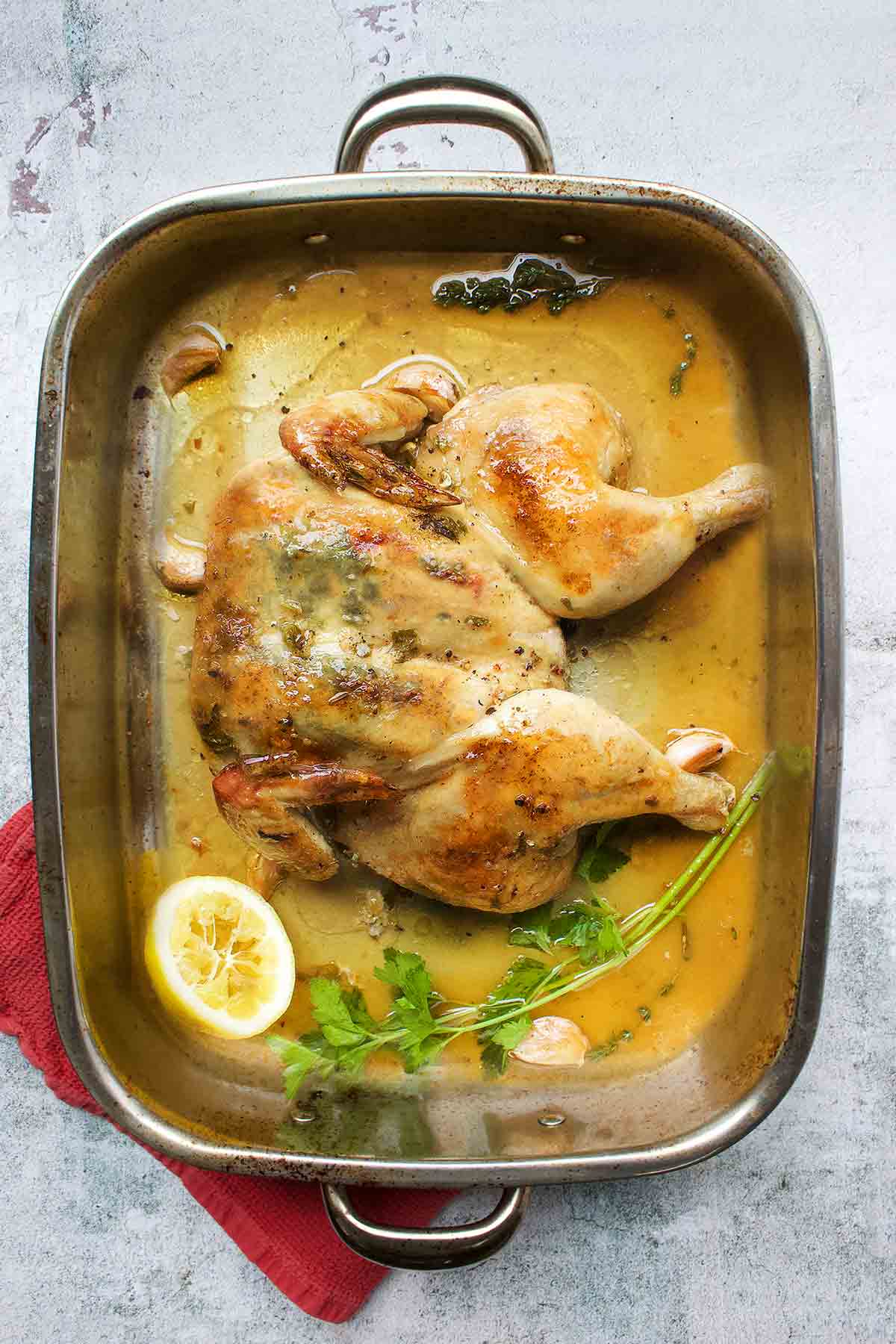
Featured Review
My husband made this Spatchcock Chicken last night. It was BEYOND delicious…better than most restaurants for sure. The deep flavor kept me coming back for more. I could eat this every night if we use this recipe.
Ginger
With very little attention, this chicken practically cooks itself. Then, when everyone wanders into the kitchen, wondering what smells so good, it’s time to eat.

Why Our Testers Loved This
Our recipe testers gobbled this up, and no wonder why. They loved the minimal prep work and the juicy, tenderly cooked chicken. Patty Fabian was very impressed that “this was an incredibly easy recipe to follow, and spatchcocking the chicken really does allow it to roast more quickly and evenly throughout.”
Rosemary Wynn describes it as “the perfect roast chicken recipe.”
Notes on ingredients
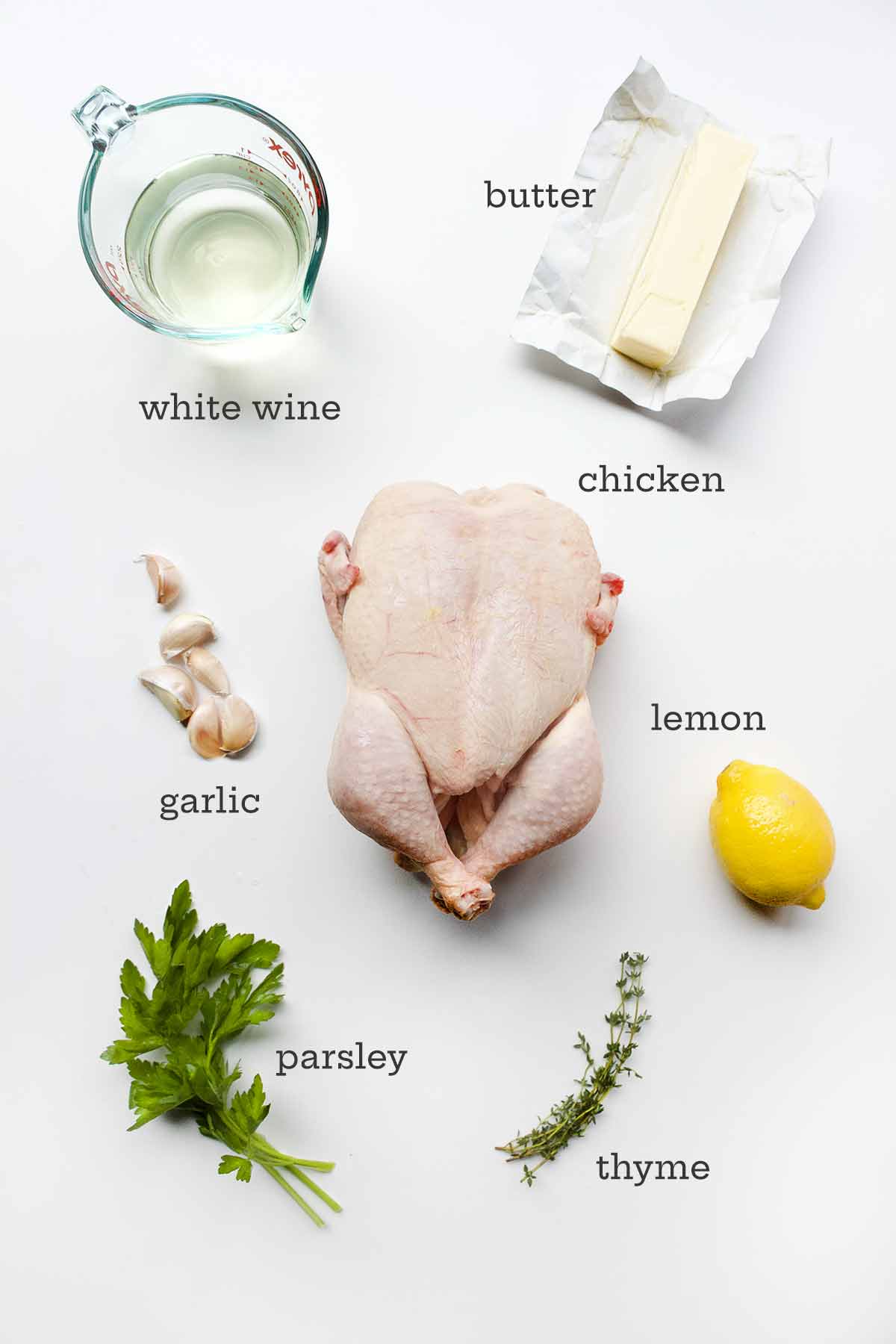
- Whole chicken–A 3-to-5-pound bird is perfect for the recipe. You don’t need the giblets or gizzards. Freeze them, then pull them out when making chicken stock or chicken gravy.
- Unsalted butter–If you use salted butter, use a lighter hand when seasoning the chicken to avoid oversalting.
- Dry white wine–Avoid sweet wines as they will make the sauce too sweet. Use a Sauvignon Blanc or Pinot Grigio here for best results. The testers found that the leftover wine also paired well with the finished dish.
Want to Make Gravy?
Wait! Don’t toss those drippings. See those caramelized brown bits at the bottom of the pan? Those are flavor bombs. If you want to turn them into liquid gold—without a single lump—watch my new video on How to Make No-Fail Pan Gravy. It comes together in 15 minutes while the bird rests.
Step-by-step instructions
- Heat the oven to 450°F. Place the chicken breast side down on a cutting board.
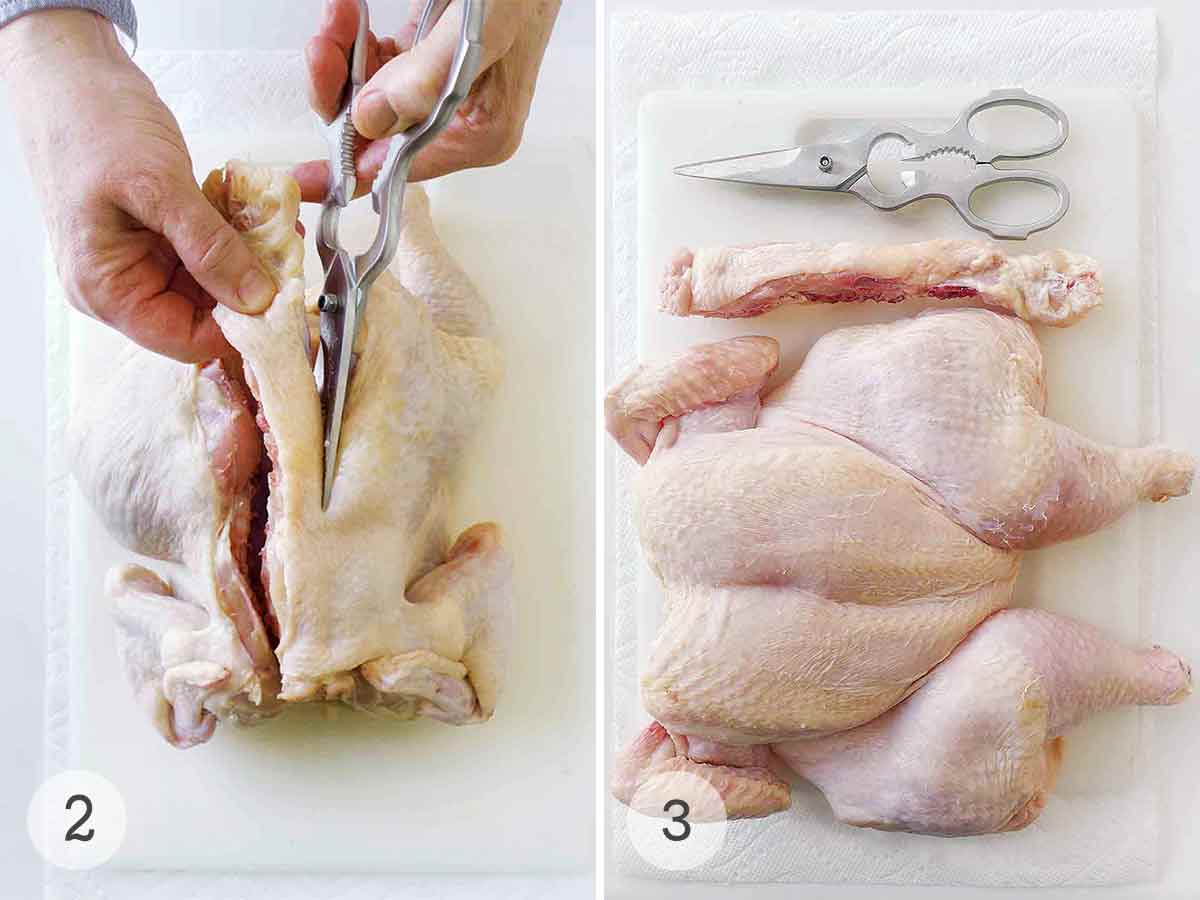
- Using poultry shears, cut along both sides of the backbone and remove it from the chicken.
- Flip the chicken over so that the breast is up. Use the heel of your hand to firmly press down on the breastbone of the chicken until you hear it crack. The chicken should lay flat with its legs splayed out on either side.
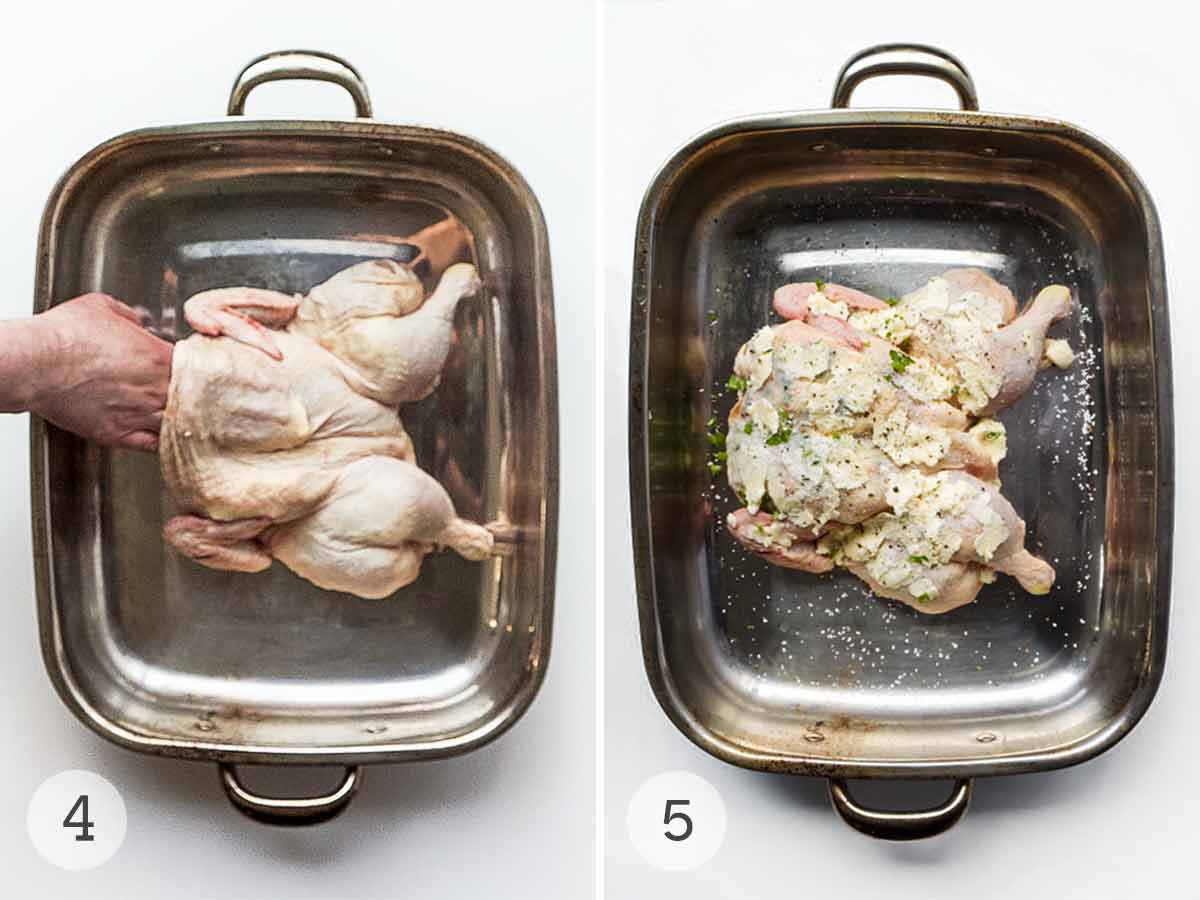
- Place the chicken in a roasting pan. Use your hands to spread half of the butter, the parsley, and thyme underneath the skin of the chicken breasts.
- Rub the remaining butter all over the outside of the chicken. Season with salt and pepper.
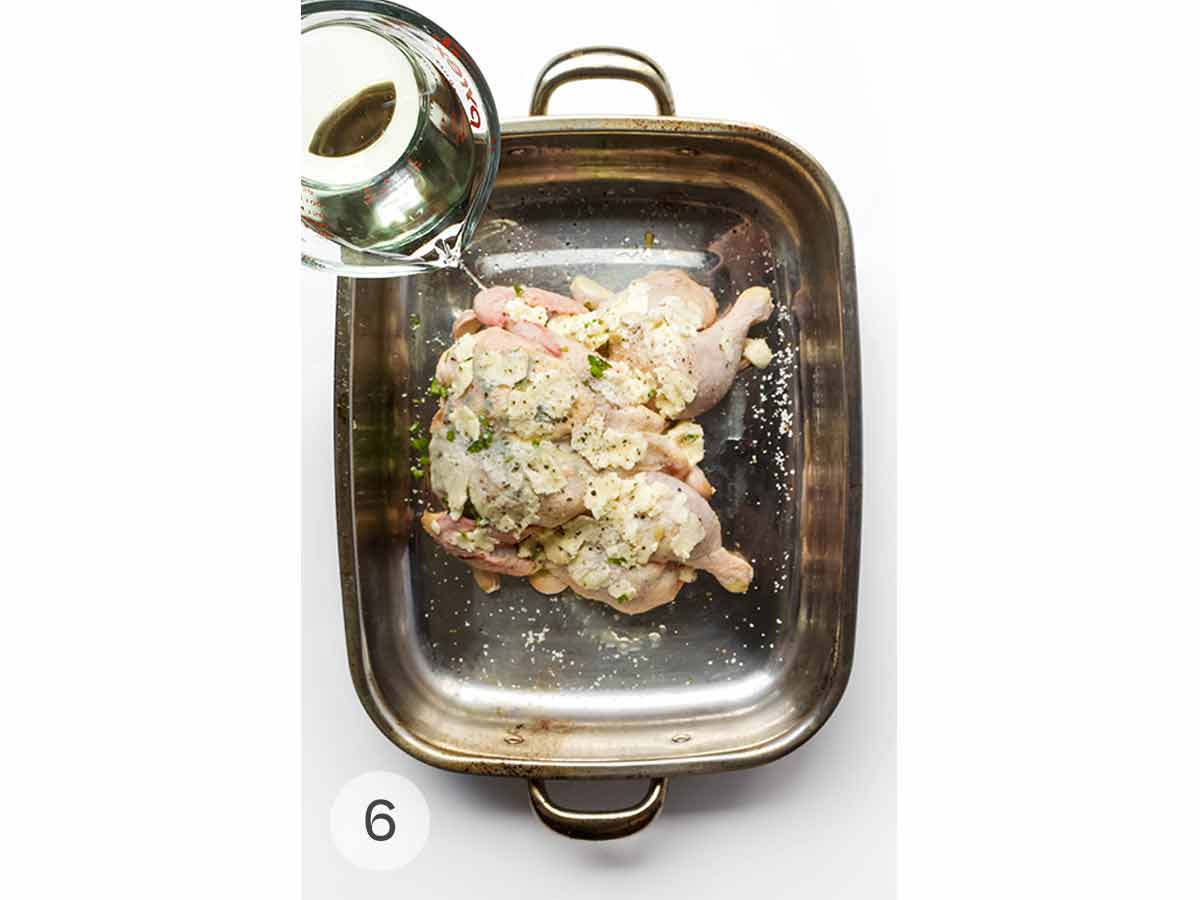
- Tuck the garlic under the chicken, then squeeze over half a lemon. Pour the wine into the roasting pan.
- Roast the chicken for 20 minutes, then baste with the pan juices.
- Reduce the oven temperature to 325°F and continue to roast, basting occasionally until the chicken is cooked to an internal temperature of 165°F. Squeeze the remaining lemon half over and let stand for 5 to 10 minutes before carving.
Want to save this?
Common Questions
If learning this technique seems like a gimmick, hear me out—it’s definitely not. It’s incredibly easy and really does make a difference.
Poultry that’s been spatchcocked (or butterflied) cooks 25% faster, which should be the only reason you need. Faster food?
However, you’ll also get a more evenly roasted bird as the breasts and thighs cook at the same time, so nothing dries out. Finally, if you love crispy chicken skin, you’ll get an entire chicken’s worth because nothing is tucked underneath.
One last suggestion—if you want to try it but aren’t sold on doing the butchery bits yourself, any decent butcher counter will do it for you.
Definitely. A spatchcocked turkey will take longer to cook than a chicken, but it will still be much faster than roasting a turkey.
The testers enjoyed this roasted spatchcocked chicken with simple sides like steamed green beans, oven-roasted radishes, and fluffy mashed potatoes. You’ll definitely want some crusty bread for sopping up the extra pan juices.
The total cooking time will be dependent on the size of your bird, but you can expect a total cook time of 50 to 75 minutes.
Pro tips & troubleshooting
- After spatchcocking the chicken, save the backbone for making slow cooker chicken stock.
- If you’re squeamish about handling raw chicken, slip on a pair of disposable gloves for smearing the butter under and over the skin.
- If your chicken is browning too quickly while roasting, cover it loosely with aluminum foil.
- To make a sauce for your roasted chicken, strain the pan juices into a measuring cup and skim off any fat. Serve the remaining juices on the side or drizzle over the cooked spatchcocked chicken.
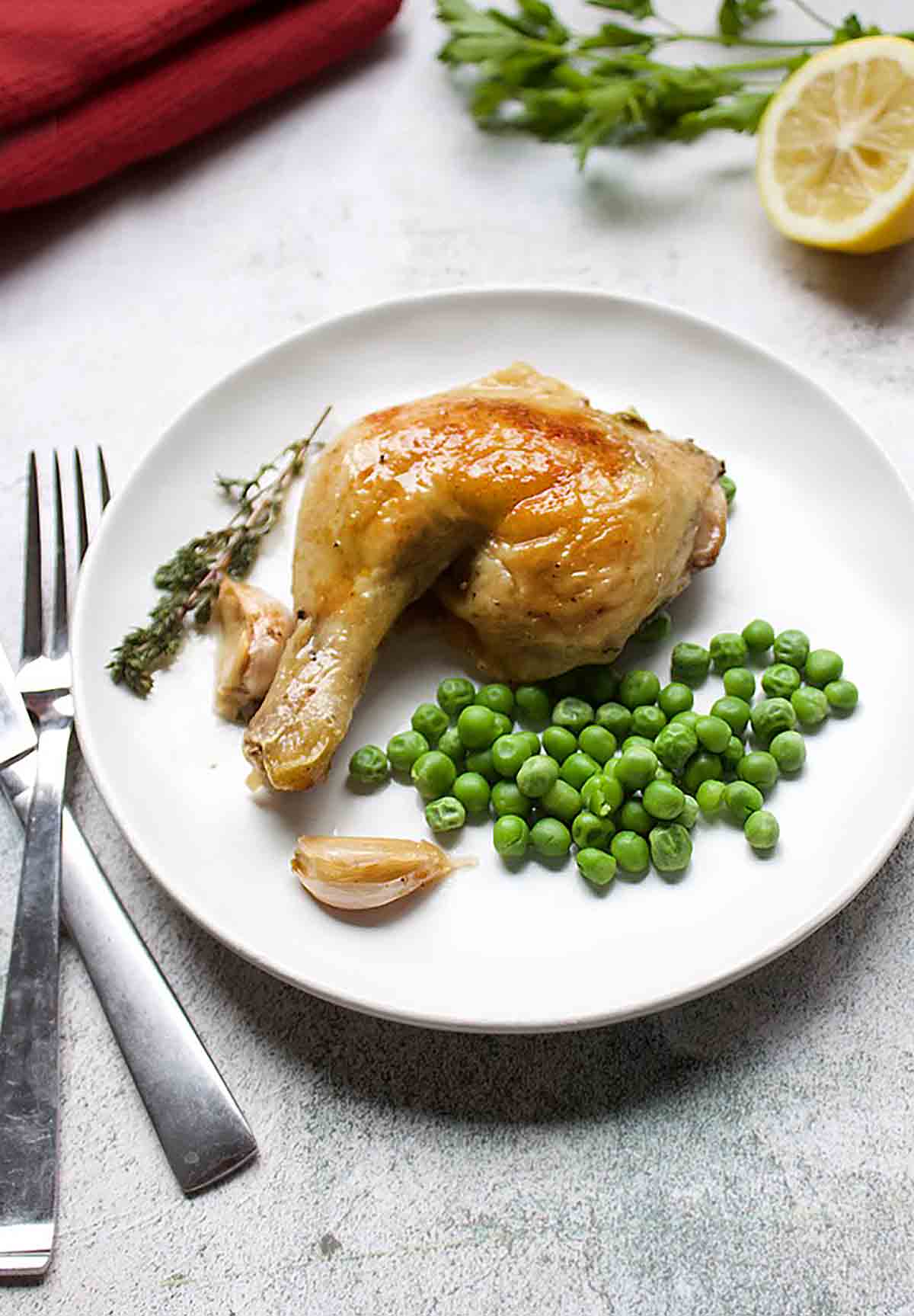
More Amazing Spatchcocked Chicken Recipes
Mayo Roast Chicken
1 hr 40 mins
Grilled Greek Chicken
1 d 55 mins
Grilled Roasted Chicken
2 hrs 45 mins
Jonathan Waxman’s Roast Chicken
1 hr 30 mins
Write a Review
If you make this recipe, or any dish on LC, consider leaving a review, a star rating, and your best photo in the comments below. I love hearing from you.–David
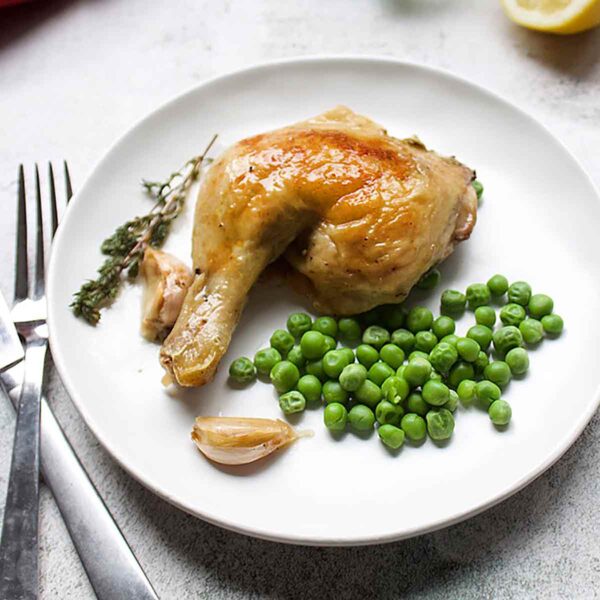
Spatchcock Roast Chicken
Ingredients
- 1 whole (3 to 5 pound) roaster chicken
- 1 stick (4 oz) unsalted butter, softened
- 1/4 cup chopped fresh parsley
- 2 teaspoons chopped fresh thyme
- Kosher salt and freshly ground black pepper
- 6 cloves garlic, unpeeled
- 1 lemon, cut in half
- 1 cup dry white wine
Instructions
- Preheat the oven to 450ºF (232°C).
- Place the chicken breast side down on a cutting board. Using poultry shears, cut along both sides of the backbone and remove the backbone (save it for stock). Turn the chicken breast side up and open the cut underside of the chicken like a book. Press firmly against the breastbone until it cracks.
- Place the chicken in a roasting pan, skin side up. Gently lift the skin around the breast and insert half of the softened butter and the chopped parsley and thyme. Rub the remaining butter over the outside of the chicken. Season the chicken with salt and pepper.
- Tuck the garlic cloves under the chicken, squeeze half of a lemon over the chicken. Add the wine to the roasting pan.
- Roast the chicken, uncovered, for 20 minutes. Baste the chicken with the pan juices. Reduce the heat to 325ºF (163°C) and continue roasting, basting every 15 minutes, until the thigh wiggles easily, the juices run clear, and a meat thermometer inserted into the thickest portion registers 165ºF (74°C), 35 to 50 minutes.
- Squeeze the remaining lemon half over the chicken and allow to stand 5 to 10 minutes before carving.
Notes
-
- Save the backbone–After spatchcocking the chicken, save the backbone for making slow cooker chicken stock.
-
- Use gloves–If you’re squeamish about handling raw chicken, slip on disposable gloves for smearing the butter under and over the skin.
-
- Cover the chicken–If your chicken is browning too quickly while roasting, cover it loosely with aluminum foil.
-
- Make a sauce–To make a sauce for your roasted chicken, strain the pan juices into a measuring cup and skim off any fat. Serve the remaining juices on the side or drizzle over the cooked chicken.
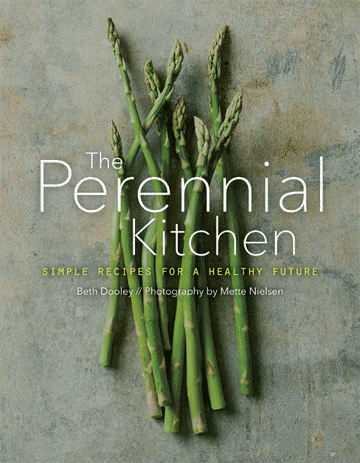
Explore More with AI
Nutrition
Nutrition information is automatically calculated, so should only be used as an approximation.
Recipe Testers’ Reviews
Winner, winner… this spatchcock roast chicken recipe did produce an incredibly moist, juicy, and flavorful chicken! Obviously, the buttery-garlic-infused wine and lemon broth the chicken roasted in were big factors, as well as the flavor-packed herbs tucked under the skin.
In this case, I used fresh chopped Italian parsley and lemon thyme, my all-time favorite with chicken. I drizzled the remaining lemon juice over the chicken and let it rest while I finished up my side dishes of a quick stuffing and steamed green beans.
You will end up with a lot of wonderful-tasting pan broth with this dish that you can drizzle over when serving, sop up with crusty bread, or save to add a great pop of flavor to another dish where chicken stock is used.
This was an incredibly easy recipe to follow, and spatchcocking the chicken really does allow it to roast more quickly and evenly throughout. I’ll definitely be making this dish again.
I have all sorts of thumbs up for this roast spatchcock chicken. I did start with an amazing bird.
A big bird. 3 kg of organic free-range bird. Let me tell you, the meat on this chicken was tender and flavorful but the spatchcock process required a bit of teamwork. These free-roaming gals are tough to crack.
Once butterflied, the process was seamless. There’s something so satisfying about massaging chicken skin with butter. I used my parsley and thyme butter mostly under the skin as my chicken was a bit bigger than the recommended size for this recipe. The outside of the skin was pretty much a vehicle for cleaning the butter off my hands.
The timings and temperature were fairly accurate. Both the breast and thigh meat were cooked to perfection and remained juicy.
I had left my second half of the lemon in the roasting pan. It had already roasted for 30 minutes when I realized it was meant for drizzling fresh at the end. For comparison, I squeezed the juice of the roasted lemon on half the roasted chicken and fresh lemon on the second half. Both juices wakened up the chicken flavor but I actually preferred the cooked lemon juice flavor. It just lent a more rounded and interesting depth of flavor.
The recipe didn’t mention a sauce. This chicken didn’t really need a sauce but I definitely had some really delicious stuff in the pan. I separated the fat from the pan juices, reduced the remaining elixir, and served this on the side.
I also drizzled the sauce over my steamed and sautéed long beans with slices of elephant garlic. A fluffy potato mash with just chicken broth and thyme was another perfect addition to the meal.
As I used Sauvignon Blanc as my wine in the sauce, we also accompanied this meal with a glass of this slightly acidic and crisp wine which brought out the herby flavors in this perfect roast chicken. Cheers!
This spatchcock roast chicken really might be the perfect roast chicken recipe. The prep was easy, and the result was a flavorful moist chicken. I even removed the skin on my portion, and the result was still a super juicy, flavorful chicken.
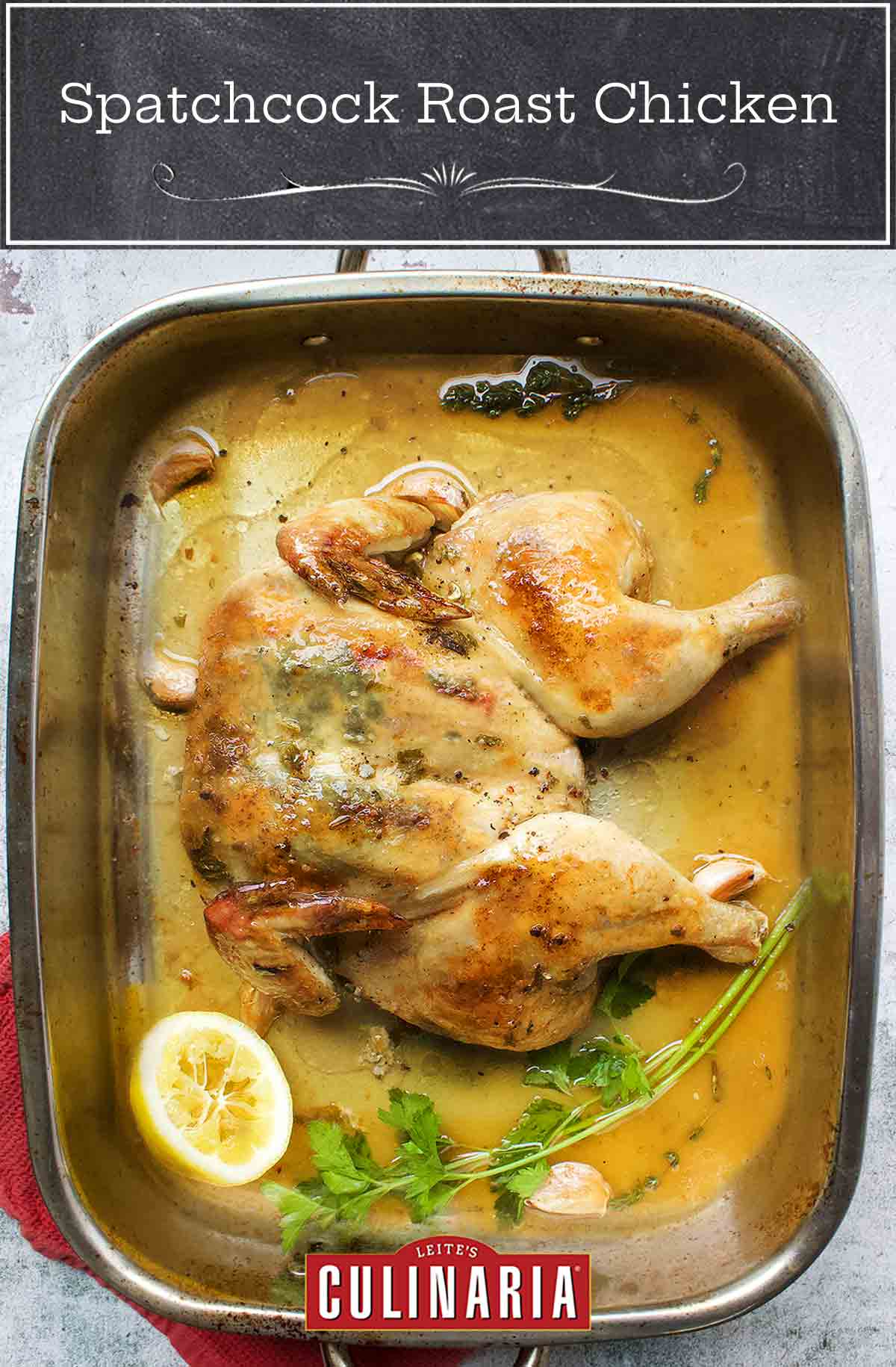
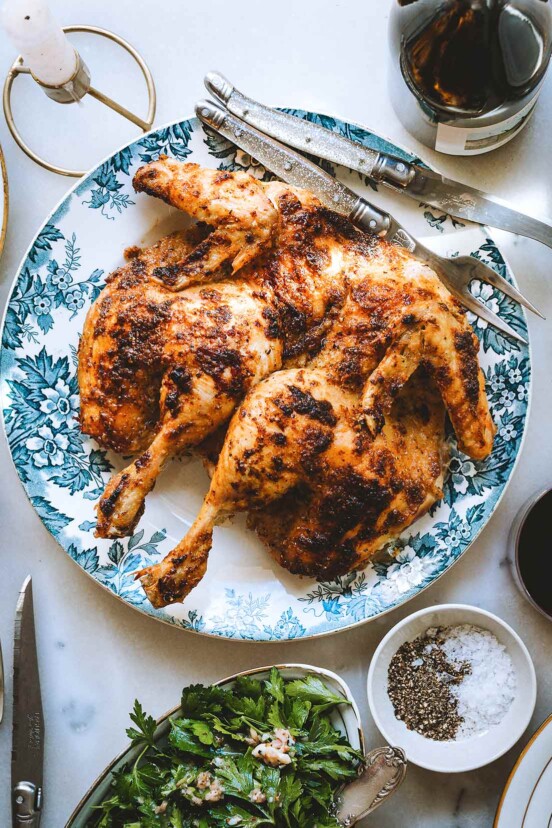
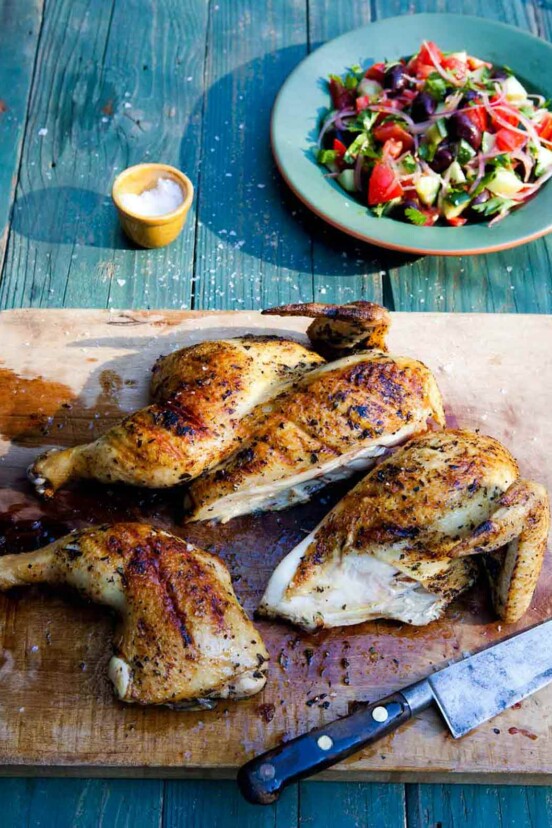

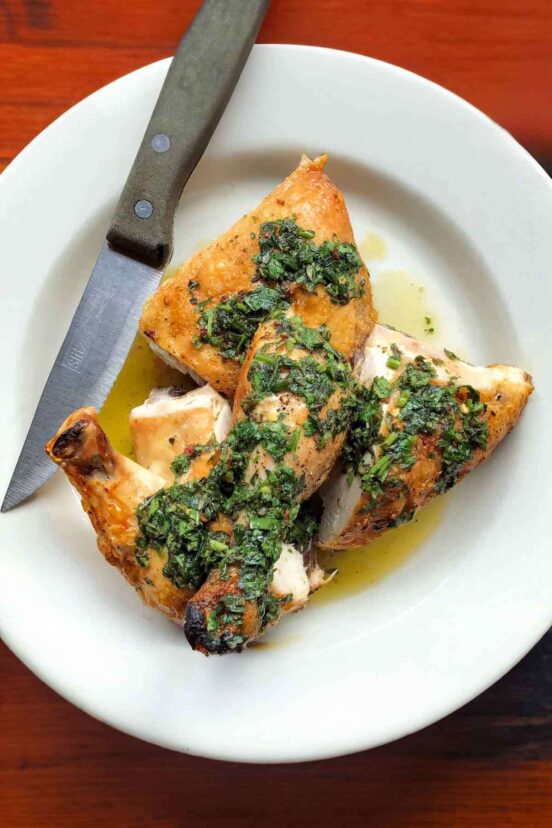











My husband made the Spatchcock Chicken last night. It was BEYOND delicious…better than most restaurants for sure. The deep flavor kept me coming back for more. i could eat this every night if we use this recipe.
Ginger
Ginger, lucky you! Having your dinner cooked for you. This is a great recipe that I just reminded myself we have make again soon.